All about roof boiler rooms
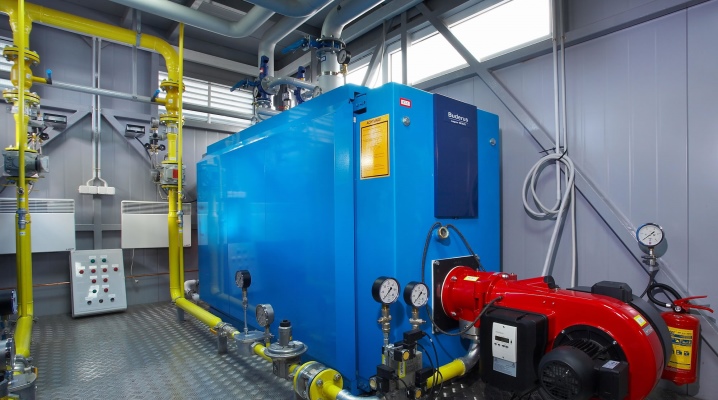
There are many types of boiler rooms. Each of them has its own characteristics and technical differences. In this article, we will find out what modern rooftop boiler rooms are and what their pros and cons are.
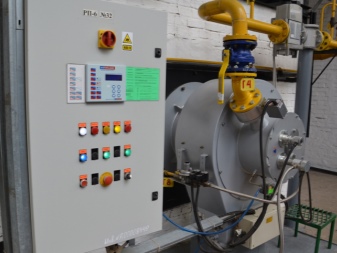
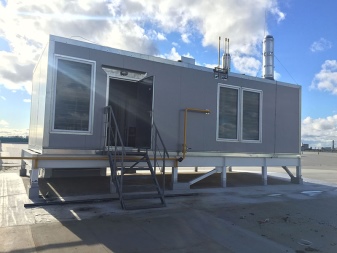
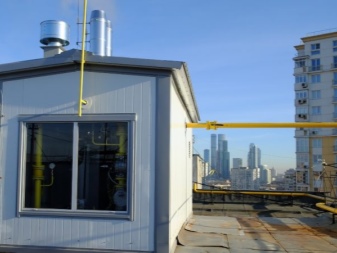
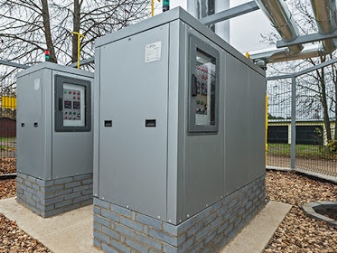
What it is?
A roof-top boiler room is an autonomous heating source, which is installed for heating and supplying hot water to both residential and industrial areas.
This type of boiler house got its name due to its location zone. Usually they are equipped on the roof. A special room is allocated for such technical areas.
But against the background of this, the heating point directly can be based both in the boiler room in question, and in the basement of the consuming structure, or on the first or basement floors.
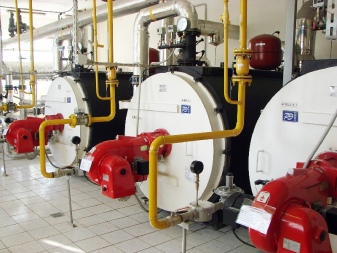
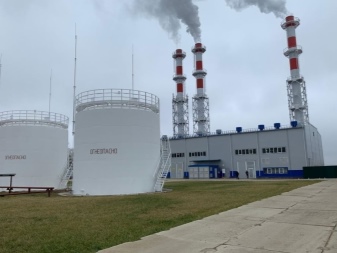

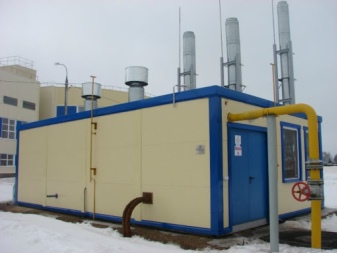
Advantages and disadvantages
The considered types of boiler rooms are a frequent occurrence in multi-apartment buildings. Such systems have a lot of positive qualities that speak in their favor. Let's get acquainted with the most significant of them.
- Rooftop units do not have to prepare separate areas. This suggests that there is no need to build auxiliary structures for their placement. For the functioning of gas equipment in high-rise buildings, an ordinary roof will go. The frame or water collector may well be based at a great distance from the boiler room.
- In the course of the action of the devices of the type under consideration, the heat losses turn out to be insignificant. There is no need for the installation of heating mains, due to which much less money is spent on the maintenance of the technical part.
- The costs associated with connecting to central communications are also reduced. And many people know that it is necessary to pay quite large sums for this at the present time.
- There are not many requirements for the design of the systems and premises under consideration. There is no need to develop and equip a high-quality chimney, as well as a forced ventilation system. SNiP allows such equipment to provide heat to buildings, the height of which reaches 30 m.
- During the design of such technical systems for residential buildings, all rules are followed in accordance with SNiP. The system can be implemented fully automated. Supervisors to monitor equipment are not hired for a full day, but for only a few hours. Due to SNiP norms, special sensors can be installed in roof-top boiler rooms, thanks to which it will be possible to control the temperature regime on the street. Thanks to the sensors, the technician can independently start the required percentage of heating.
- The positive aspects include the fact that residents do not have to constantly tune in to the schedules that are relevant in the country (heating is turned off in summer). If necessary, such equipment can function effectively not only in cold seasons, but also in summer. To monitor the roof boiler room, you do not need to call a team of specialists - this work can be easily handled by ordinary staff who monitor the house all year round. Such equipment is affordable and easy to use.
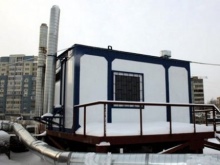
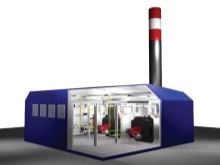
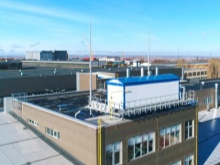
All the listed advantages are important and significant in the arrangement of such boiler rooms.
But they also have certain disadvantages, which should also be taken into account.
- The disadvantages include the requirements that apply to the structure in which the roof boiler room will be equipped. For example, in the installation work, it is required to use only modern lifting systems, and the weight of the boiler itself is also limited. It is required to install sophisticated automation, as well as reliable fire extinguishing systems for such boiler houses.
- Also, the disadvantage of such boiler houses is their dependence on in-house engineering systems. This suggests that their service is completely transferred to the responsibility of the owners of residential and non-residential areas.
- If an apartment building has a height of more than 9 floors, it will not be possible to equip a boiler room of the category in question in it.
- In the course of operation, the systems under consideration generate a lot of noise. Operating pumps generate very strong vibrations that can cause discomfort to people living on the upper floors.
- Such technical components are effective and well thought out, but their cost is also very high. Installing quality equipment in an apartment building can cost an incredible amount of money.
- People living in Soviet-built houses can literally wait weeks for heat to come to their apartments, and in houses where there is already a private roof boiler room, heating comes on time. Unfortunately, in old houses, the installation of such systems is possible in rare cases, because not every structure is able to withstand such significant loads without problems.
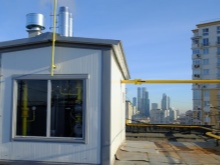


Requirements
There are special standards for the design and operation of the heating systems in question. A rooftop boiler room and the equipment installed in it must meet a number of important requirements. Let's take a look at some of them.
- The space where such a boiler room is equipped must be designed in fire safety class "G".
- The indicator of the height of the room from the floor surface to the ceiling base should be at least 2.65 m (this is the minimum parameter). The width of the free passage should not be less than 1 m, and the height should not be less than 2.2 m.
- The exit from the boiler room should lead to the roof.
- The floor in the boiler room must be waterproofed (permissible water filling up to 10 cm).
- The total weight of the entire technical part must be such that the loads on the floor do not turn out to be excessive.
- The door leaves in the boiler room should be of such a size and structure so that later equipment can be easily replaced.
- The gas pressure in the gas pipeline must not exceed 5 kPa.
- The gas pipeline is led to the room along the outer wall and in those places where its maintenance will be as convenient as possible.
- Gas pipelines should not block ventilation grilles, door or window openings.
- The installation of water treatment must be carried out in the very workspace of the boiler room.
- Liquid for hot water supply should be transferred from the water supply system, without involving water treatment.
- Lightning protection of buildings must be carried out in accordance with RD 34.21.122.87.
- Projects of such gas boiler houses must necessarily involve the grounding of gas pipelines.
- The standby pump must be turned off automatically in the event that an emergency shutdown of the working pump occurs.
- The adjustment of the gas pipeline in these boiler rooms must allow for the possibility of adjusting the gas pressure.
- All sensors and regulators must be installed on site and comply with the boiler house technological scheme. Electronic control components are fixed in a separate control cabinet.
- The automation cabinet must be protected against unauthorized access.
- On the territory of the boiler room itself there must be natural ventilation. Air exchange must reach at least 1.5 times.
- The ventilation system of the roof-type boiler room must be independent and separate from the ventilation system of the buildings themselves.
- A trawl should be located in the equipment room in case of leakage.
- Additional conditions and measures in order to enhance the protection of the boiler house are established according to the information of the heat generator manufacturing plants.
- The boiler room is not allowed to be fixed on the ceiling of living rooms.
- The dimensions of the boiler room should not exceed the dimensions of the house where it is equipped.
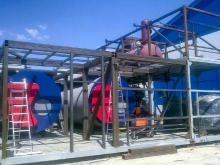
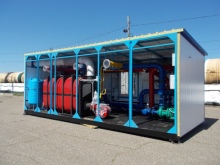
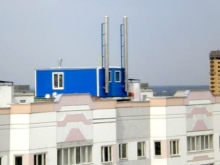
Of course, these are far from all the requirements that apply to the systems under consideration. They are equipped in accordance with special instructions in optimal technical conditions.
Species overview
Roof-top boiler rooms are different. Each species has its own distinctive characteristics. Let's take a closer look at them.
Block-modular
The specified type refers to boiler houses of the lightweight category, which are not capital structures. Block-modular structures are assembled from light and thin metal panels, reinforced with profile components, corners and specialized ribs. From the inside, the specified boiler room is necessarily supplemented with steam, hydro, and heat insulating coatings with a fire layer. The combustion products are sent to the chimney, which is characterized by a lightweight device.
The main advantage of modular buildings is their lightness. They are versatile and easy to use; if necessary, they can be dismantled without any problems. Modular boiler rooms are often equipped with condensing boilers, many of which are compact in size.
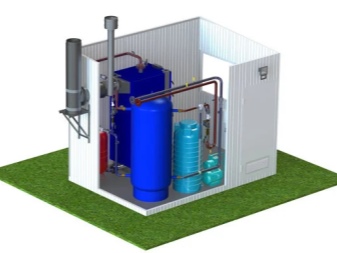

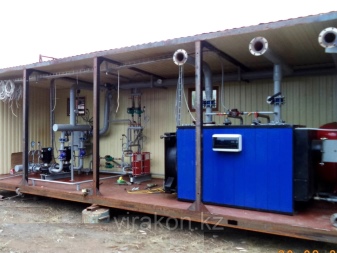
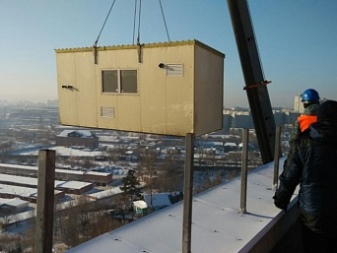
Stationary
Otherwise, these boiler rooms are called built-in. The entire structure of such a room is integrated directly into an apartment building. If the construction is built of bricks or panels, then the area of the boiler room is exactly the same. In a sense, a stationary room is technical, but only it is focused exclusively on heating.
Usually, housing projects, where the systems under consideration are present, initially provide for their further arrangement.
In addition to the standard built-in structures, there are also completely autonomous built-in and attached structures.
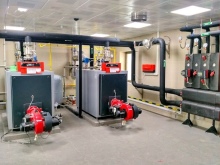
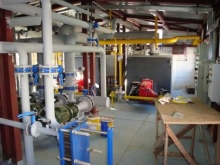

Installation features
Until the installation of the roof boiler room, regardless of its type, a detailed project is always drawn up, in accordance with which all further work is carried out. Modern block-modular structures are mounted in a specific order.
- A specialized platform is being installed. According to the rules, it must make support on the supporting structures of the walls or other suitable bases.
- Before starting installation work, a thorough examination is always carried out at a professional level. Thanks to its results, it is possible to determine the total bearing capacity of the house structure, to make sure that it is necessary to strengthen the important constituent elements of the building.
- The structure is mounted on a special coating made of fire-resistant materials. They lay it on a pillow pre-filled with concrete. Its optimum thickness is 20 cm.
- It is imperative that measures are taken to ensure the highest level of safety for the installation workers. The railing is fixed along the entire perimeter of the roof.
- Installation of soundproofing modules is mandatory.
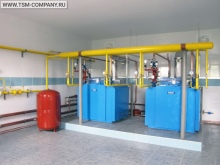
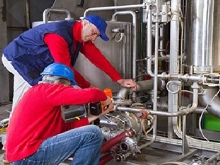
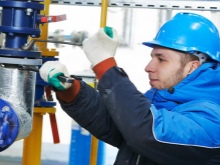
Features of the installation of built-in boiler rooms are as follows.
- They are built in the event that they were provided in advance by the project of the house. In the technical part, all possible loads that will be applied to the load-bearing walls will be initially taken into account. All fire safety systems are initially thought out.
- Then the project of the built-in boiler room is drawn up and approved. It usually turns out to be simpler than modular options. All noise suppressing, soundproofing and anti-vibration measures are provided here in advance during the construction of walls and decoration.
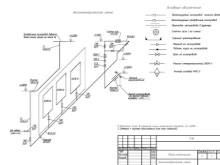

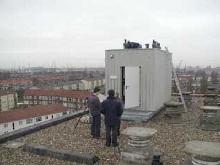
Operation procedure
It is very important to properly operate the equipment in the conditions of roof heating systems. Let's take a look at a few of the most important rules that should be followed.
- It is imperative to check the operation of the supply and exhaust valves, since it is at their expense that the boiler room is ventilated.
- You will need to install a special gas insulation flange that can deactivate the system at the slightest sign of fire.
- On the roofs of modern high-rise buildings it is required to put a high-quality alarm, which will transmit both sound and light "beacons" in case of fire.
- The chimney must have a height greater than the height of the boiler room itself. The minimum difference will be 2 m. Each of the gas boilers in the house must be supplied with its own dedicated smoke outlet. However, a prerequisite is their equal height. But the gap between them does not play a special role.
- The boiler rooms in question must operate at the expense of separate electricity. This means that they must have a dedicated branch of the electrical network. The voltage level in a building can vary, therefore, it is not recommended to conduct risky experiments with electricity, since due to network failures, there are risks of major malfunctions in the functioning of the heating system. A high-quality diesel generator can be used as an autonomous power source.
- It is prohibited to install such types of boiler rooms directly above the apartments. The presence of a technical floor in the building is a prerequisite for arranging a roof boiler room. The floor on which the gas appliances will be located must be made of strong reinforced concrete slabs.
- The equipment that is installed in such boiler rooms makes quite a lot of unnecessary noise. In order to be able to install such systems in apartment buildings in the future, it is imperative to take care of installing soundproofing materials.
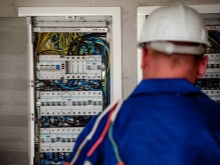
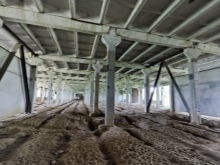

Only under the condition of competent operation can one expect that the roof boiler room will last for many years and will not cause problems for the residents of an apartment building.
See below for the benefits of a rooftop boiler room.













The comment was sent successfully.